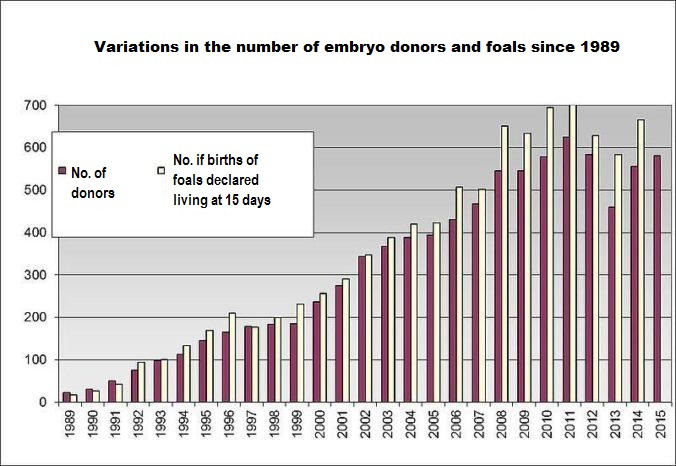
25.07.2018
The first equine embryo transfers were carried out in Japan by Oguri and Tsutsumi in 1972.
In France, the first transfers were carried out in 1986.
Between 1989 and 2014, approximately 8700 foals were born in France via embryo transfer (source: SIRE).

Variations in the number of embryo donors and foals declared since 1989
Red color: No. of donors
White color: No. of births of foals declared living at 15 days
The stud book rules of each breed stipulate the authorized breeding techniques.
Today, embryo transfer (ET) is authorized in numerous breeds:
• Selle Français, Anglo-Arabian, draft.
• In case of the French Trotter, the authorizations for ET are much more specific (only one pregnancy authorized per year using a donor with a track record of racing or her descendants and with the approval of the stud book commission).
• The technique is prohibited by the thoroughbred and AQPS stud books.
In most saddle horse and pony breeds, the number of foals born per donor per year has been unlimited since 1997.
To practice embryo transfer, an equine center manager’s license is required. This technique must be carried out by an accredited collection team under the responsibility of a center manager and a veterinary surgeon (if he/she is not the center manager).
